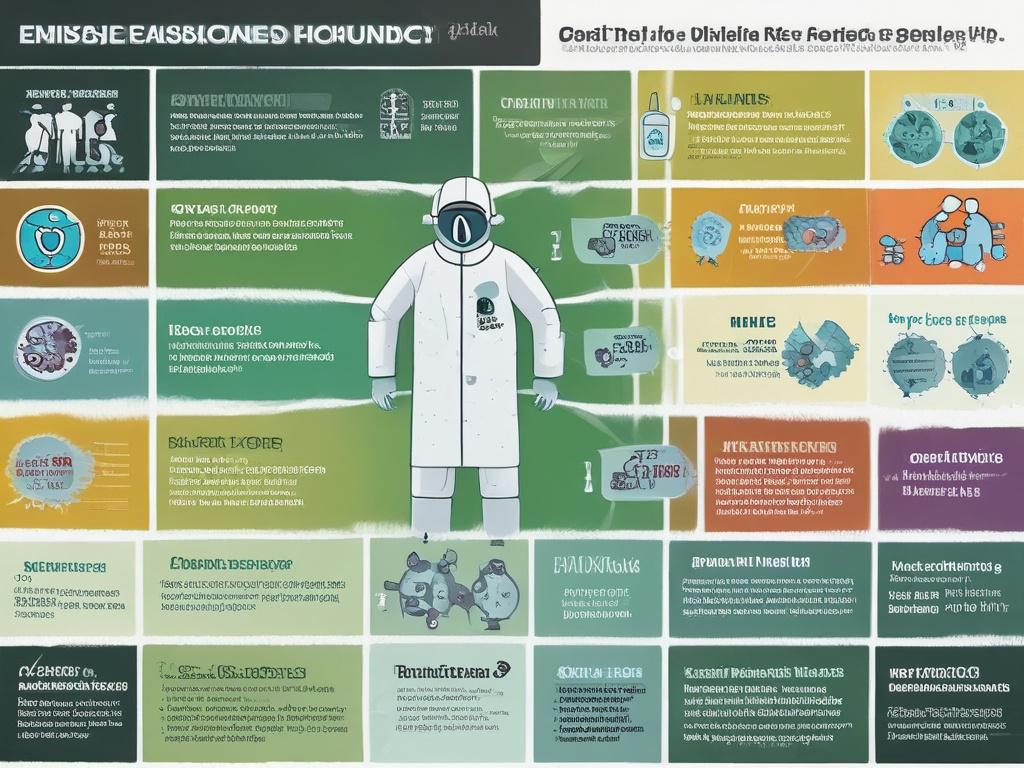Website designed with the B12 website builder. Create your own website today.
Start for free
In a world forever altered by the COVID-19 pandemic, the urgency to rethink our pandemic response has never been clearer. Pandemics used to take years, if not decades, to control, leading to devastating societal and economic impacts. However, advancements in biotechnology, particularly with programmable vaccines, offer a promising solution that could transform the speed and effectiveness of our response to infectious outbreaks. Imagine a scenario where vaccines can be designed and manufactured in record time, allowing us to contain potential threats before they escalate into global crises.
This blog post explores the revolutionary potential of programmable vaccines and how they can reshape our approach to pandemic preparedness. We will delve into the cutting-edge technologies facilitating rapid vaccine production, and highlight the importance of investing in the necessary infrastructure to support this evolution. By prioritizing these advancements now, we can build a robust defense mechanism that not only safeguards public health but also ensures that future pandemics can be managed swiftly and efficiently.
The future of vaccine development: How programmable vaccines can change pandemic response
Programmable vaccines represent a groundbreaking shift in our approach to pandemic response. Traditional vaccine development often takes years and is laden with logistical hurdles, making it difficult to react swiftly to emerging threats. With the advent of programmable vaccine technology, scientists can create tailored vaccines rapidly, responding to new pathogens almost in real-time. This innovation hinges on our ability to use digital blueprints, allowing researchers to share crucial information globally within seconds. By leveraging these advancements, we can turn the tide against infectious diseases before they escalate into widespread outbreaks.
The COVID-19 pandemic showcased both the vulnerabilities and potential of our healthcare systems. While the rapid development of mRNA vaccines saved countless lives, it also exposed critical gaps in our capacity for timely response. Programmable vaccines eliminate many of these bottlenecks by enabling modular manufacturing that can swiftly adapt to changing viral threats. Imagine a world where health authorities can deploy a vaccine within weeks of detecting a new strain, transforming the pandemic narrative from one of prolonged waiting to immediate action. This paradigm shift holds the promise of not only saving lives but also stabilizing economies and preserving public health on a global scale.
Speeding up the process: The role of technology in rapid vaccine manufacturing
Technology plays a crucial role in expediting vaccine development and manufacturing. With the advent of modular mRNA platforms, scientists can swiftly produce vaccines tailored to specific pathogens. These platforms enable rapid scaling of production based on real-time data, effectively responding to emerging threats. By harnessing cloud computing and digital blueprints, researchers can collaborate and share invaluable information across borders, reducing the lag time typically associated with vaccine development. This interconnectedness fosters innovation, driving down the time it takes to turn a vaccine concept into a tangible product ready for distribution.
Furthermore, advancements in biotechnology make it possible to streamline the testing and approval processes for new vaccines. Regulatory agencies are beginning to adopt more flexible protocols that align with the speed of technological progress. Continuous monitoring of vaccine safety and efficacy through real-world data collection allows for an expedited feedback loop. By leveraging artificial intelligence and big data analytics, scientists can predict potential challenges and adapt their strategies proactively. This technological synergy forms the backbone of a robust pandemic defense strategy, ensuring that when the next outbreak occurs, we can respond swiftly and decisively, turning potential global crises into manageable incidents.
A call to action: Investing in infrastructure for a safer tomorrow
To truly harness the potential of programmable vaccines, we must prioritize significant investments in infrastructure. This includes not only technological advancements but also the establishment of manufacturing facilities capable of rapid response. Governments and private entities should collaborate to create a network of facilities equipped with modular mRNA platforms. By doing so, we can ensure that vaccine doses can be manufactured on demand, eliminating bottlenecks that hinder timely distribution during outbreaks. Investing in infrastructure will equip us with the tools necessary to respond swiftly to emerging threats, ultimately saving lives and resources.
Furthermore, public understanding of these advancements is crucial. Governments and health organizations must engage in proactive education initiatives, informing the public about the benefits of programmable vaccines and how they can be utilized in pandemic responses. By fostering a well-informed society, we can pave the way for quicker acceptance and deployment of these life-saving technologies. The time to act is now; by investing in infrastructure and education, we can transform our pandemic response capabilities and ensure a safer, healthier future for all.